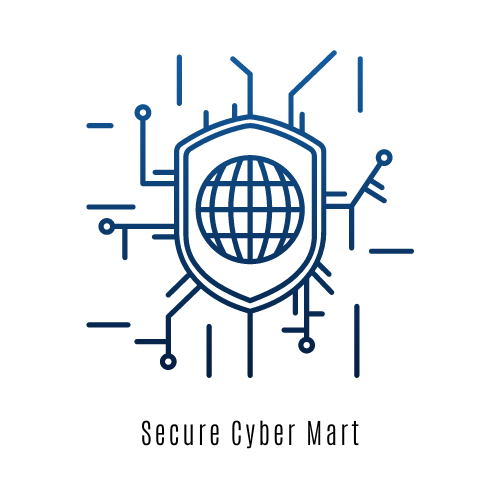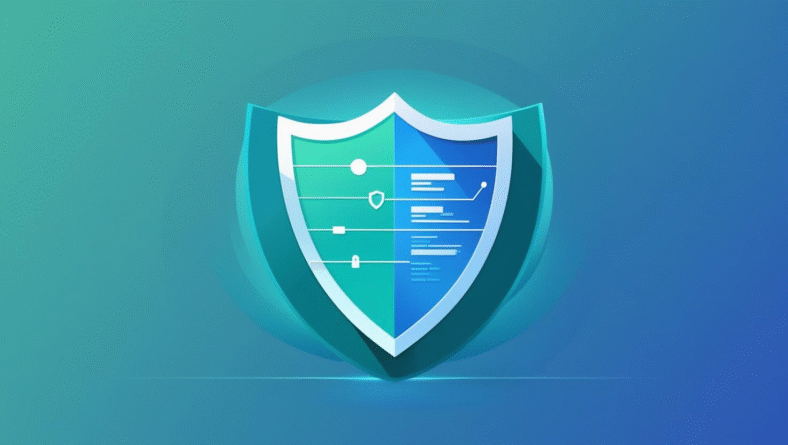Implementing effective cybersecurity practices has become a critical concern for individuals and organizations. As our dependence on digital technologies grows, so does our vulnerability to cyber threats. Recent high-profile attacks, like the Colonial Pipeline ransomware incident that disrupted fuel supplies across the Eastern United States or the SolarWinds breach that compromised numerous government agencies, highlight the devastating impact these threats can have on our infrastructure, economy, and daily lives.

What is Cybersecurity?
Cybersecurity keeps systems, networks, and programs safe from digital attacks. These attacks try to access, change, or ruin important information. They also try to extract money from users or disrupt business work. It’s hard to keep everything safe because there are more devices than people, and hackers are getting smarter.
To protect information, everyone in a system needs to work together. There are a few key parts to good cybersecurity:
- Network security: Keeping a computer network safe from intruders
- Application security: Making sure software and devices are safe from threats
- Information security: Keeping data safe and private
- Operational security: Decisions and actions for protecting data
- Disaster recovery: How to handle a cyber attack

Common Cybersecurity Threats
Understanding the landscape of cyber threats is the first step toward protecting yourself and your organization. Here are the most prevalent cybersecurity threats you should be aware of:
Malware

Malicious software that infiltrates and damages computers without the users’ knowledge. This includes viruses, worms, trojans, and spyware that can steal data, delete files, or take control of your system.
Phishing

Deceptive attempts to steal sensitive information such as usernames, passwords, and credit card details by disguising it as a trustworthy entity in electronic communications.
Ransomware

Malware that encrypts files and demands payment for the decryption key. The Colonial Pipeline attack in 2021 resulted in a $4.4 million ransom payment and significant disruption to fuel supplies.
DDoS Attacks

Distributed Denial of Service attacks floods systems, servers, or networks with traffic to exhaust resources and bandwidth, preventing legitimate requests from being fulfilled.
Social Engineering

Psychological manipulation to trick users into making security mistakes or giving away sensitive information. These attacks exploit human error rather than technical vulnerabilities.
Man-in-the-Middle

Attackers secretly relay and possibly alter communications between two parties who believe they are directly communicating with each other, allowing the attacker to steal data.
Real-World Cybersecurity Attack Examples
Colonial Pipeline Ransomware Attack (2021)
One of the most significant cyberattacks in the U.S. occurred when hackers accessed Colonial Pipeline’s systems using a weak VPN password. The company was forced to pay a $4.4 million ransom and shut down its 5,500-mile pipeline for six days.
This caused fuel shortages on the East Coast. It was a big problem.
What did we learn from this? It’s essential to use multi-factor authentication. Also, updating passwords regularly is key. And having a strong incident response plan is necessary for critical infrastructure.

SolarWinds Supply Chain Attack (2020)
When hackers added harmful code into SolarWinds’ Orion software updates, this sophisticated attack compromised the software supply chain. The malware built a backdoor to client systems when they installed these updates. Roughly 18,000 companies, including several U.S. government departments, were impacted by the assault.
Takeaways: there is a vital need for supply chain security, code signing verification, and ongoing monitoring for abnormal network activity.

Best Practices for Cybersecurity
Implementing these cybersecurity best practices can significantly reduce your risk of falling victim to cyber attacks:
Password Management

- Use strong, unique passwords for each account.
- Implement multi-factor authentication (MFA).
- Consider using a password manager.
- Change passwords regularly.
Software Updates

- Enable automatic updates when possible.
- Patch management for business systems.
- Update all software, not just operating systems.
- Retire outdated software that’s no longer supported.
Data Encryption

- Encrypt sensitive data at rest and in transit.
- Use VPNs when connecting to public Wi-Fi.
- Enable full-disk encryption on devices.
- Implement email encryption for sensitive communications.
Regular Backups

- Follow the 3-2-1 backup rule (3 copies, 2 different media types, 1 offsite).
- Test backups regularly to ensure they can be restored.
- Automate backup processes.
- Keep some backups offline to protect from ransomware.
Employee Training

- Conduct regular security awareness training.
- Run simulated phishing exercises.
- Create clear security policies and procedures.
- Foster a security-conscious culture.
Network Security

- Use firewalls and intrusion detection systems.
- Segment networks to limit breach impact.
- Secure Wi-Fi networks with strong encryption.
- Implement access controls and least privilege principles.
Cybersecurity Practices for Individuals
While organizations often have dedicated resources for cybersecurity, individuals must also take steps to protect their personal information and devices. Here are essential practices everyone should follow:
Personal Cybersecurity Checklist
- Use unique, complex passwords for each online account
- Enable two-factor authentication wherever available
- Be cautious of suspicious emails, messages, and phone calls
- Keep all devices and software updated
- Use secure, encrypted connections (look for HTTPS)
- Back up important data regularly
- Be mindful of what you share on social media
- Use privacy settings on all accounts and applications
Did You Know?
Recent studies show that over 80% of data breaches are caused by human mistakes or weak passwords. To prevent most account breaches, it’s important to use strong, unique passwords. Enabling multi-factor authentication is also key.

Emerging Trends in Cybersecurity
The cybersecurity landscape is constantly evolving. Here are some emerging trends that are shaping the future of digital protection:
AI-Driven Threat Detection

Artificial intelligence and machine learning are changing the game regarding detecting threats in the digital world. These technologies can spot patterns and anomalies that might signal a cyberattack at a speed and scale that far surpasses what human analysts can achieve on their own. This means we can respond to potential threats more quickly, keeping our systems safer and more secure.
Zero-Trust Architecture

The zero-trust security model operates on the principle “never trust, always verify.” It requires strict identity verification for every person and device trying to access resources, regardless of whether they are inside or outside the network perimeter.
Quantum Computing Risks

As quantum computers continue to develop, there’s a growing concern that they could eventually crack many encryption methods we rely on to keep our data safe. In response to this potential threat, organizations are starting to adopt quantum-resistant cryptography to ensure their protection in the future.
IoT Security Challenges

As the Internet of Things (IoT) continues to grow, the security challenges it brings are also increasing. Many IoT devices don’t have strong security measures, which opens the door for potential attackers. Finding ways to protect these interconnected devices is becoming crucial as they play a bigger role in our lives.
Cloud Security Evolution

As more companies move their operations to the cloud, they’re developing new security strategies to tackle the specific challenges of safeguarding their data and applications in these environments. The relationship between cloud providers and their customers is becoming more nuanced, with shared responsibilities becoming clearer and more refined.
Security Automation

Security orchestration, automation, and response (SOAR) platforms are making it easier for organizations to handle routine security tasks. This lets security teams concentrate on more complex challenges and speeds up their response to incidents.
Frequently Asked Questions About Cybersecurity Practices
What is the biggest cybersecurity threat to small businesses?
Ransomware and phishing attacks pose the greatest threats to small businesses. These attacks target businesses of all sizes, but small businesses often lack the resources for robust security measures, making them particularly vulnerable. Employee training and security measures like regular backups can significantly reduce these risks.
How often should I update my passwords?
Experts say it’s better to focus on making passwords strong and unique, not changing them often. Use a password manager to keep track of your strong, different passwords for each account. Also, turn on multi-factor authentication when you can. If a service gets hacked, change your password right away.
What should I do if I suspect my data has been compromised?
If you think your data might have been stolen, act fast:
1) Change the passwords for any accounts that might be at risk,
2) Keep an eye on your accounts for anything strange,
3) Reach out to the company or service that was hacked,
4) Put a fraud alert on your credit reports, and
5) If someone has stolen your identity, tell the FTC.
Is antivirus software enough to protect my computer?
Antivirus software is key, but it’s not the only thing you need. You should also keep your computer and apps up to date, use a firewall, and have strong passwords. Be careful with links and attachments, and back up your data often.
Conclusion: Taking Action on Cybersecurity
Cybersecurity is a constant battle that needs your attention and quick thinking. As threats grow, so must our defenses. By following the best practices in this guide, you can lower your chances of getting hacked.
Everyone has a role in keeping data safe. Whether you’re protecting your own info or your company’s, the main rules are the same. Stay informed, use multiple layers of protection, and be ready for any situation.
Key Takeaways for Cybersecurity Practices
- Know the common threats like malware, phishing, and ransomware
- Make your passwords strong and unique, and use multi-factor authentication
- Keep your software and systems current
- Back up your data regularly and safely
- Train your employees on cybersecurity
- Keep up with the latest trends and threats

Related posts/products:
- Top Cybersecurity Threats and How to Defend Against Them
- AI-powered cyber threats in 2024
- Norton 360 – 2024 Ready – Antivirus software for 3 Devices 1-Year Subscription – Includes VPN, Password Manager and PC Cloud Backup
- Norton 360 – 2024 Ready – Antivirus software for 5 Devices 1-Year Subscription – Includes VPN, Password Manager and PC Cloud Backup
- Essential Tips for Mastering Cyber Security Defense
- Coding for Beginners to Advanced: Elevate Your Skills with This Guide
- Top Advices to Crafting Strong and Secure Password Practices

